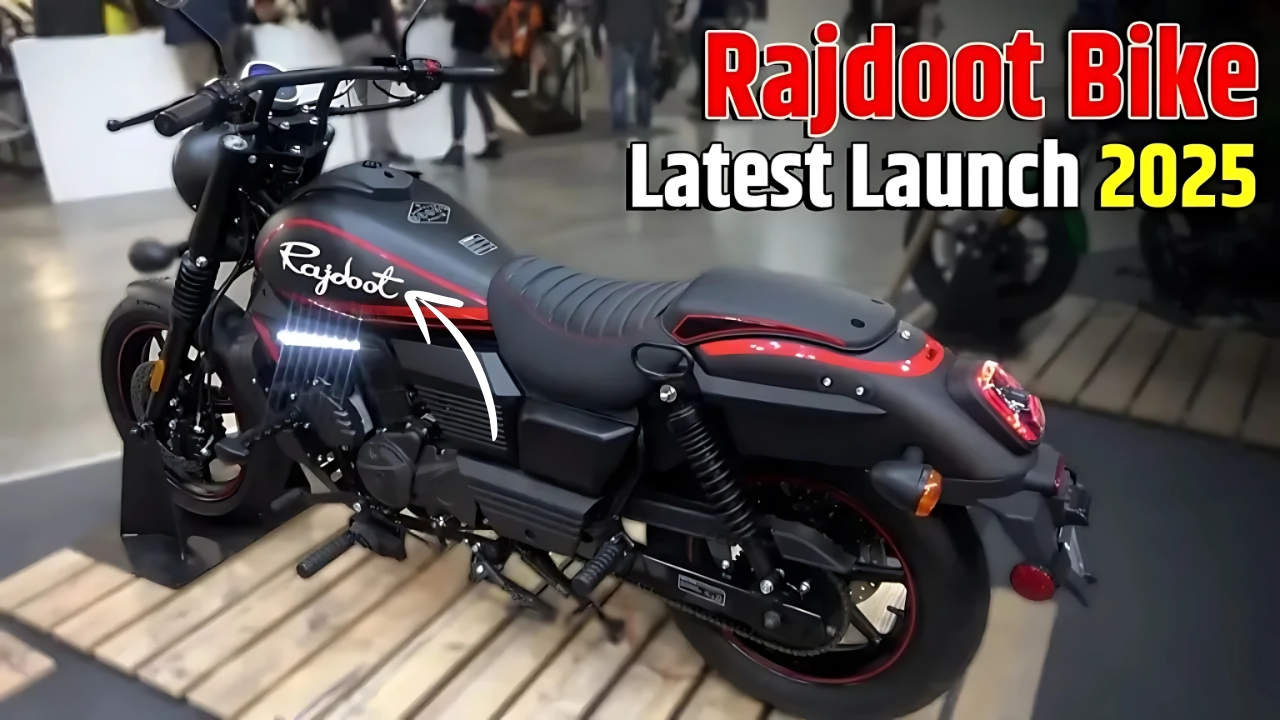The Rajdoot 350, a motorcycle that defined an era in Indian mobility, remains etched in the collective memory of a generation that witnessed India’s automotive evolution.
Manufactured by Escorts Group under license from Czechoslovakian motorcycle manufacturer Jawa, the Rajdoot 350 combined rugged reliability with distinctive styling to create a vehicle that transcended mere transportation to become a cultural icon.
From its introduction in the 1960s to its eventual discontinuation in the late 1990s, the Rajdoot 350 witnessed India’s transformation and played a significant role in motorizing a nation taking its first steps toward widespread personal mobility.
Historical Context and Origins
The story of the Rajdoot 350 begins against the backdrop of post-independence India, a period marked by industrial development and the quest for self-reliance.
In 1961, Escorts Group entered into a technical collaboration with Jawa of Czechoslovakia to manufacture motorcycles for the Indian market.
This partnership resulted in the birth of the Rajdoot 350, essentially an Indian version of the Jawa 350 Type 634 twin-cylinder two-stroke motorcycle.
The timing was opportune – India was experiencing growing demand for personal transportation, yet options remained limited and largely unaffordable for the average citizen.
The Rajdoot 350 entered this landscape as a robust, relatively affordable alternative to both the premium imported motorcycles and the ubiquitous scooters that dominated Indian roads.
Technical Specifications and Design
The Rajdoot 350 was powered by a 350cc air-cooled, two-stroke, twin-cylinder engine that produced approximately 18 horsepower. While modest by today’s standards, this output was considerable for its time and market segment.
The engine was mated to a four-speed transmission with a unique foot-operated shifter on the right side – a characteristic that distinguished it from most other motorcycles of the era.
Design-wise, the Rajdoot 350 featured a recognizable silhouette with its elongated fuel tank, comfortable dual seat, and prominent headlamp nacelle.
The distinctive exhaust pipes running parallel on the right side of the motorcycle created a visual signature that made the Rajdoot instantly identifiable even from a distance.
The motorcycle’s substantial weight of approximately 170 kg contributed to its stability on varied road conditions but also earned it the affectionate nickname “Rajdoot Jawa Hathi” (elephant) among riders.
One of the most innovative features of the Rajdoot 350 was its encased chain drive, which protected the chain from dust and water – a thoughtful adaptation for Indian conditions where unpaved roads and monsoon seasons posed significant challenges to motorcycle maintenance.
This attention to durability extended to other aspects of the motorcycle, including its robust frame and suspension system designed to withstand the punishing conditions of Indian roads.
Cultural Impact and Popularity
The Rajdoot 350’s influence extended far beyond its technical specifications. In an era before widespread automobile ownership, motorcycle possession represented a significant step up the social ladder.
The Rajdoot, with its imposing presence and distinctive exhaust note, became a symbol of accomplishment and mobility for India’s growing middle class.
Its cultural footprint was further enhanced by its appearances in popular Indian cinema of the 1970s and 1980s. Memorable scenes featuring the Rajdoot 350 in films helped cement its status as an object of desire and aspiration.
The motorcycle’s distinctive styling made it an ideal prop for directors looking to convey character traits of independence, strength, and mobility.
The Rajdoot 350 also played a crucial role in governmental and institutional fleets. Its reliability and ease of maintenance made it a favorite among police departments, postal services, and other public institutions requiring dependable transportation.
The sight of uniformed officers astride Rajdoot motorcycles became a common feature of urban and rural landscapes alike, further integrating the motorcycle into the fabric of everyday Indian life.
Production Evolution and Variants
Throughout its production run spanning approximately three decades, the Rajdoot 350 underwent several updates and refinements while maintaining its core identity.
Early models closely resembled their Jawa counterparts, with subsequent iterations incorporating changes to meet evolving regulatory requirements and consumer preferences.
A notable variant was the Rajdoot RD 350, introduced in the 1980s in collaboration with Yamaha.
Though sharing the Rajdoot name, this model represented a significant departure from the original 350, featuring Yamaha’s high-performance two-stroke technology.
The RD 350 developed a cult following among performance enthusiasts but never achieved the widespread popularity of the original Rajdoot 350.
The company also produced the smaller Rajdoot GTS, a 175cc motorcycle popularly known as the “Rajdoot Bobby” after its prominent featuring in the 1973 Bollywood film “Bobby.” This variant helped extend the Rajdoot brand to riders seeking a more economical and lightweight option.
Challenges and Decline
Despite its popularity, the Rajdoot 350 faced mounting challenges as India entered the liberalization era of the 1990s.
The opening of the Indian market to international manufacturers brought an influx of more fuel-efficient, technologically advanced motorcycles that appealed to a new generation of consumers.
The Rajdoot’s two-stroke engine, once an advantage for its simplicity and power, became a liability as emission regulations tightened and fuel economy became a greater priority.
Additionally, changing consumer preferences favored sleeker, more contemporary designs over the Rajdoot’s classic styling.
The motorcycle’s considerable weight and relatively high maintenance requirements compared to newer models further contributed to its declining appeal in an increasingly competitive marketplace.
Production of the Rajdoot 350 gradually wound down in the 1990s, marking the end of an era in Indian motorcycle manufacturing.
The last units rolled off the assembly line as the decade came to a close, concluding a production run that had witnessed the transformation of Indian society and transportation.
Legacy and Collector Status
In the years following its discontinuation, the Rajdoot 350 transitioned from commonplace transportation to coveted collector’s item.
Vintage motorcycle enthusiasts began seeking out well-preserved examples, recognizing their historical significance and distinctive character.
Restoration projects became passion endeavors for those looking to preserve this piece of Indian automotive heritage.
Today, a well-maintained Rajdoot 350 commands respect at vintage motorcycle gatherings and often fetches prices far exceeding its original cost.
Owners’ clubs and enthusiast communities have formed around the model, sharing maintenance tips, spare parts, and restoration expertise to keep these motorcycles operational decades after production ceased.
The distinctive exhaust note of the Rajdoot 350’s two-stroke engine has become a nostalgic auditory cue for many Indians who grew up during its heyday.
This characteristic sound, once a common feature of urban soundscapes, now turns heads as a rare reminder of a bygone era.
The Rajdoot 350 Today
While no longer in production, the Rajdoot 350 continues to influence Indian motorcycle culture. Its legacy is evident in the growing interest in motorcycle restoration and the premium now placed on authentic vintage motorcycles.
What was once considered merely utilitarian transportation has been recontextualized as a significant artifact of Indian industrial and cultural history.
For many collectors and enthusiasts, maintaining a Rajdoot 350 represents a connection to India’s automotive history and a period of national development.
Each surviving motorcycle serves as a tangible link to an era when motorization was transforming Indian society and creating new possibilities for mobility and connection.
Rajdoot 350 come to roaring in Indian Roads
The Rajdoot 350 stands as more than just a motorcycle in the history of Indian transportation – it represents a chapter in the nation’s industrial development and cultural evolution.
Its journey from licensed production of a foreign design to beloved national icon mirrors India’s own trajectory toward greater self-reliance and confidence.
Though superseded by more advanced designs and technologies, the Rajdoot 350’s influence persists in the memories of those who rode it and in the garages of collectors who preserve its legacy.
In an age of increasing homogenization in vehicle design, the distinctive character and unmistakable presence of the Rajdoot 350 serve as a reminder of a time when motorcycles were as much about identity and aspiration as they were about transportation.
As vintage motorcycle culture continues to flourish globally, the Rajdoot 350 takes its rightful place among machines that defined their eras and left indelible impressions on the societies they served.
For India, the Rajdoot represents not just a mode of transport but a vehicle that helped a nation on the move realize its potential for mobility, independence, and progress.



